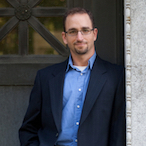Hawaii became the last state to enter the union of the United States in 1959, but may become the proverbial canary in the coal mine for the U.S. in the transition to a clean economy. The state's isolation presents both challenges and opportunities for its policy makers and business community on the energy front. On one hand, high shipping costs should mean that locally produced goods would have a tremendous advantage over imports. On the other hand, historically inexpensive oil has created an economy based almost entirely on path dependencies and inertia in decision making. Long ago, the state committed to importing goods rather than investing in manufacturing infrastructure, as a result, generators burn oil for energy and renewables look comparatively expensive.
This path dependency, and the culture it has created, present significant hurdles for the state as it looks to transition to a clean economy. Consider:
- The state has committed to 70% clean energy by 2030
- Currently, despite significant resources in solar, wind, geothermal, and wave energy, clean energy accounts for less than 10% of the state's energy, with the balance largely created by burning imported oil, costing the state $7 billion annually in money it could reinvest in its own infrastructure
- Despite a terrific climate and rich soils, the state imports 85% of its food
It appears everyone understands the problems, with even the Republican candidate for Governor in last fall's election trumpeting his commitment to a green economy for the island state. On the surface, it appears all the pieces are in place for a transition, but how will the state overcome its inertia and existing infrastructure?
Consider the electric vehicle dilemma for the state's main population center, the island of Oahu and the city of Honolulu. It would appear, on the surface, that this would be the perfect laboratory for electric cars, as range anxiety can hardly exist on an island this size. The state recently committed to being the first with statewide electric vehicle recharging stations. But when the electricity for those charging stations comes from burning imported oil, the conversion efficiency alone actually means that those cars are burning more oil than a traditional internal combustion engine vehicle. Proponents suggest that getting these charging stations in place and building an infrastructure can mean that when the state does get to 100% clean energy, that all the island's cars will be running emission free.
Perhaps...but by then, won't the technology for electric vehicle charging simply exist in everyone's garage and anywhere where there's a traditional 3 prong outlet? Some might argue that this money would be far better spent on creating green energy sources and local food production now, betting on the electric vehicle technology to improve and simplify over time.
---
Scott Cooney is the author of Build a Green Small Business (McGraw-Hill), and will be covering Hawaii's transition to a sustainable economy. Questions/Comments/Suggestions for this series, feel free to get in touch with Scott--Scott [at] GreenBusinessOwner.com.

Scott Cooney, Principal of GreenBusinessOwner.com and author of Build a Green Small Business: Profitable Ways to Become an Ecopreneur (McGraw-Hill, November 2008), is also a serial ecopreneur who has started and grown several green businesses and consulted several other green startups. He co-founded the ReDirect Guide, a green business directory, in Salt Lake City, UT. He greened his home in Salt Lake City, including xeriscaping, an organic orchard, extra natural fiber insulation, a 1.8kW solar PV array, on-demand hot water, energy star appliances, and natural paints. He is a vegetarian, an avid cyclist, ultimate frisbee player, and surfer, and currently lives in the sunny Mission district of San Francisco. Scott is working on his second book, a look at microeconomics in the green sector. In June 2010, Scott launched GreenBusinessOwner.com, a sustainability consulting firm dedicated to providing solutions to common business problems by leveraging the power of the triple bottom line. Focused exclusively on small business, GBO's mission is to facilitate the creation and success of small, green businesses.














